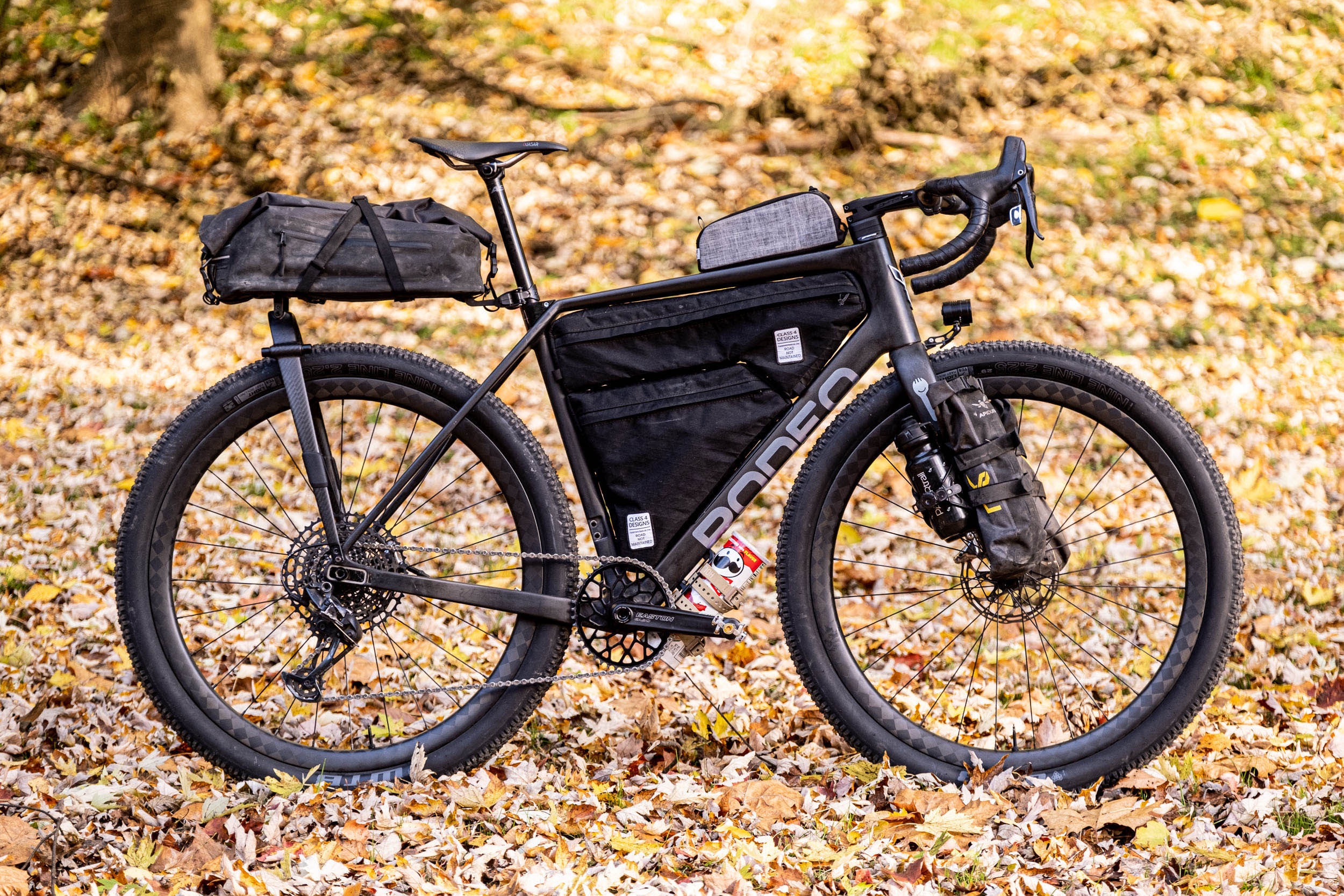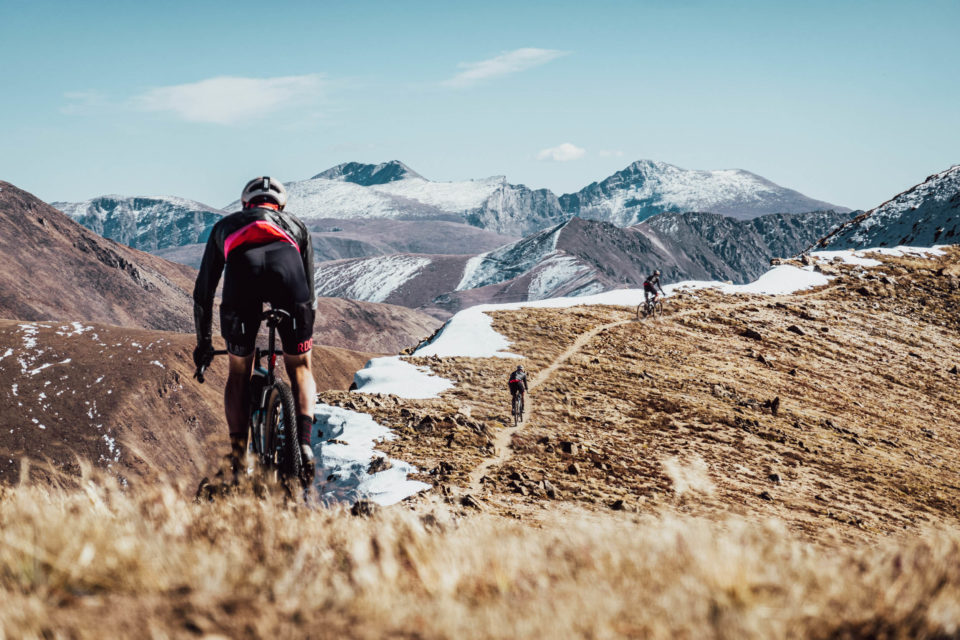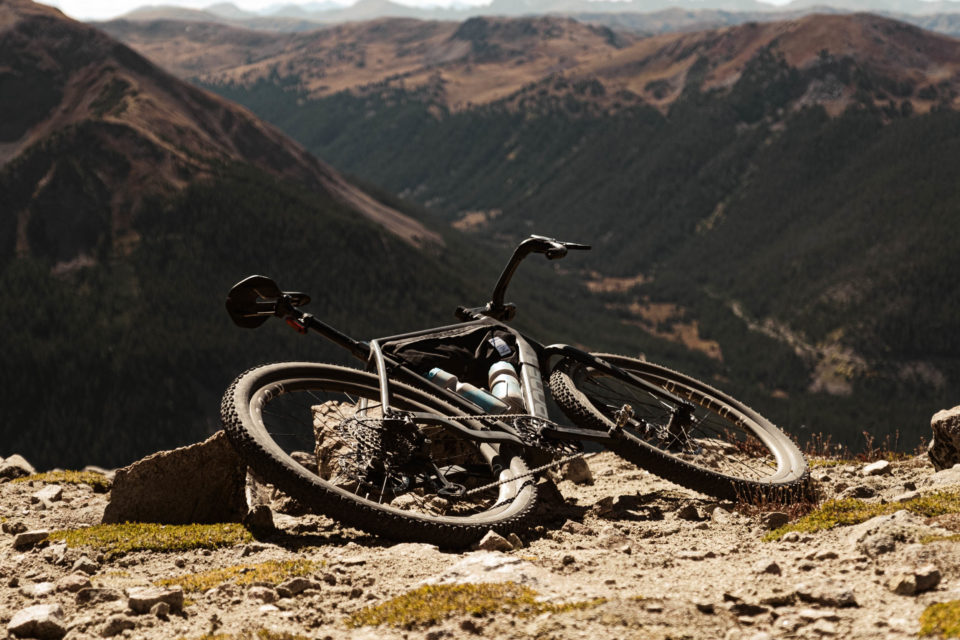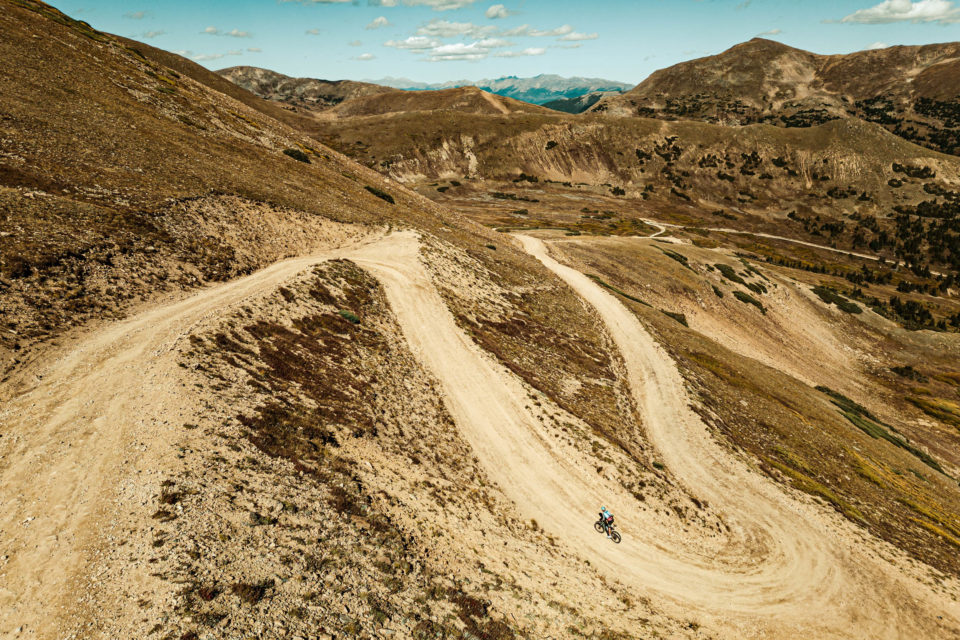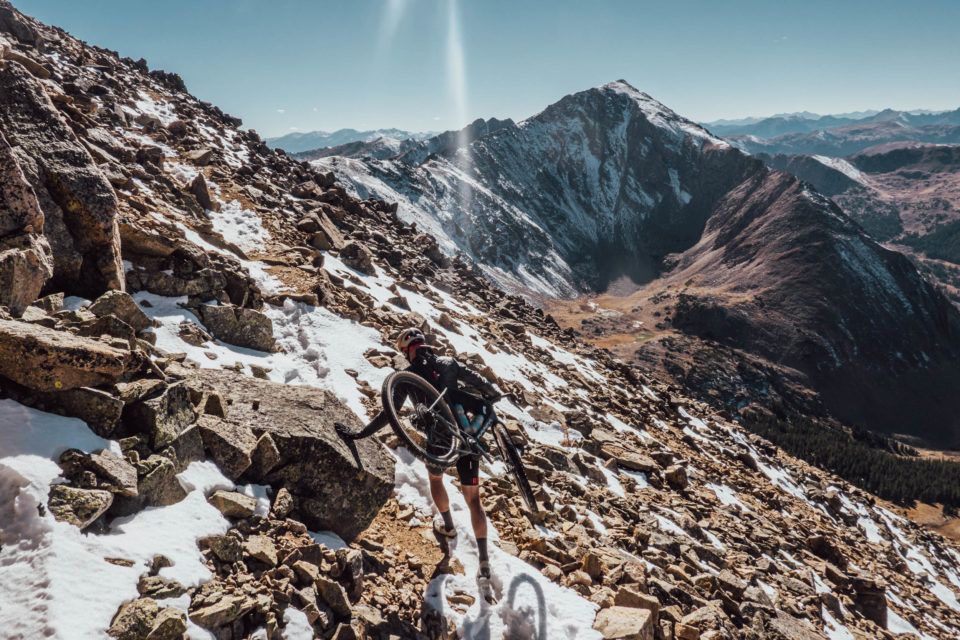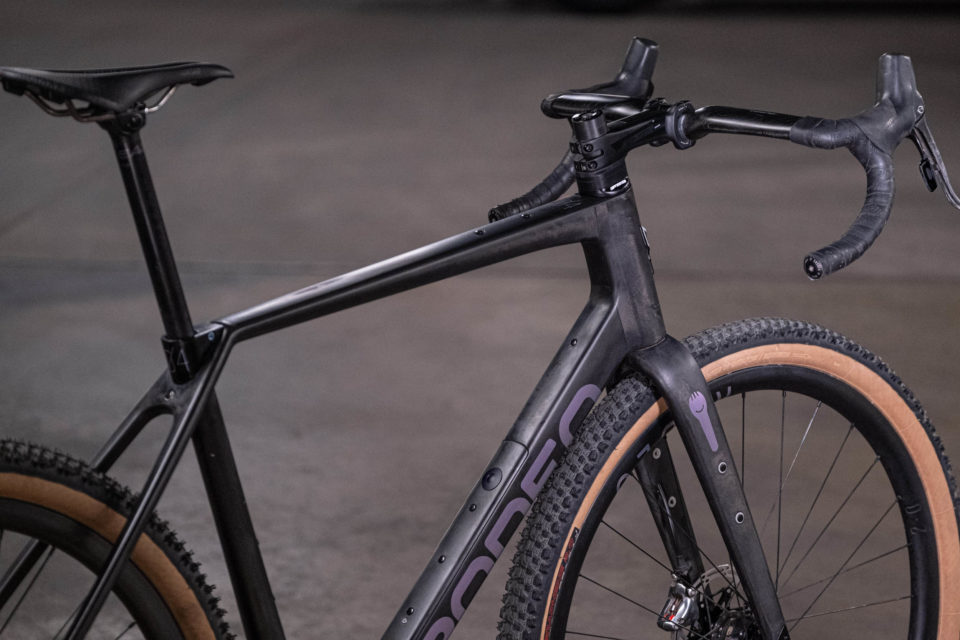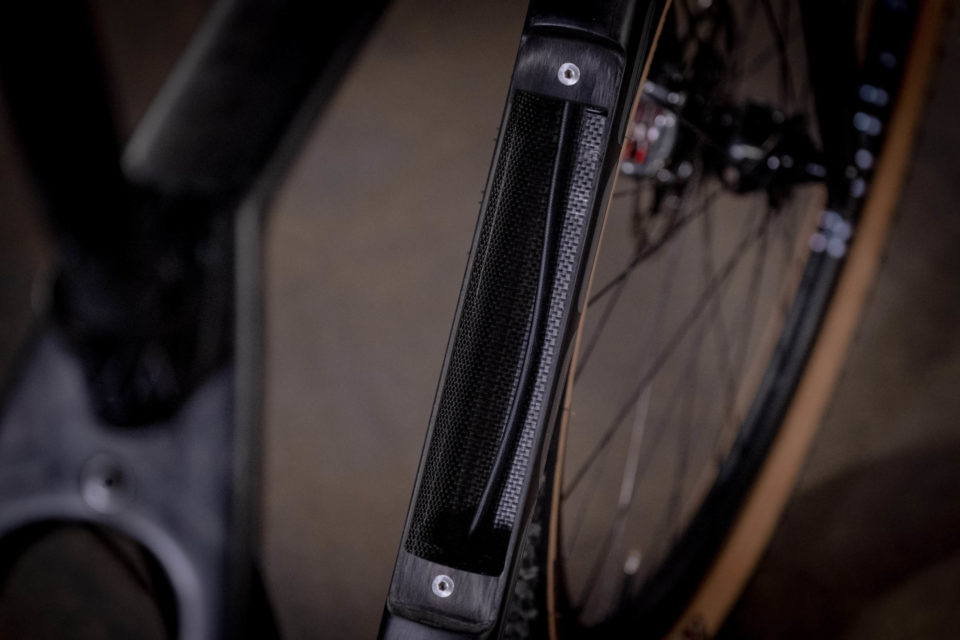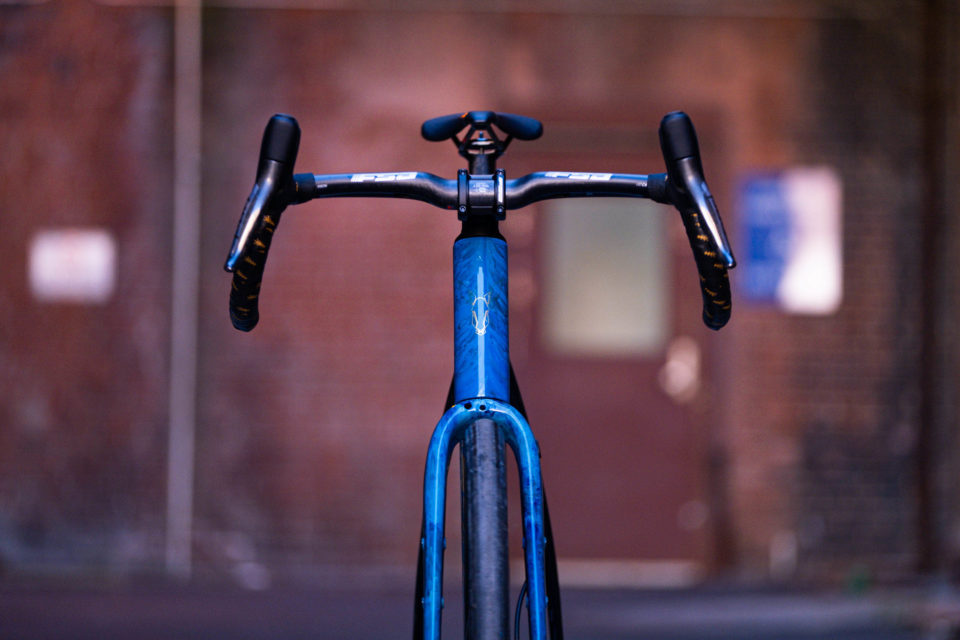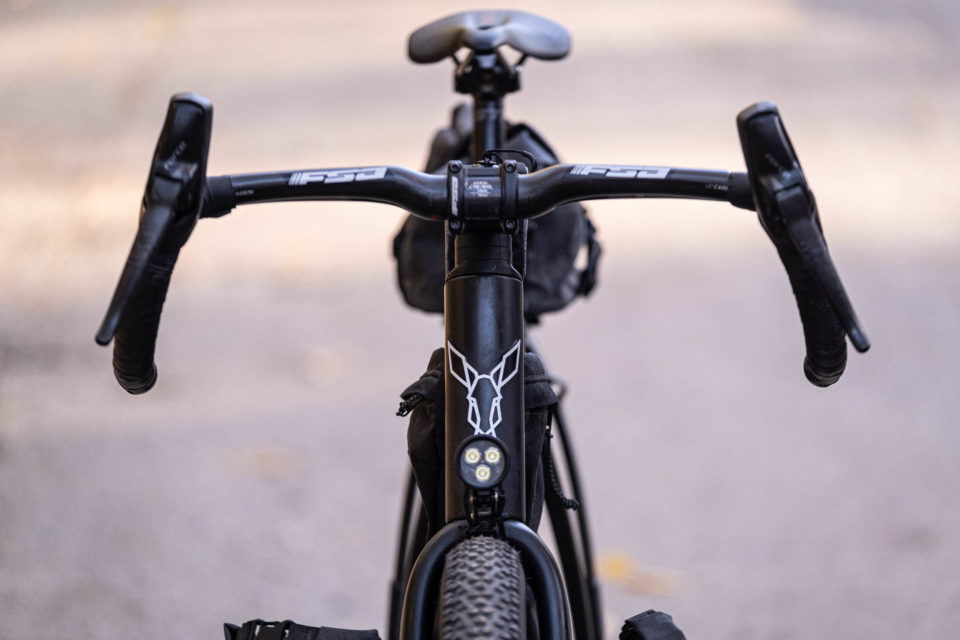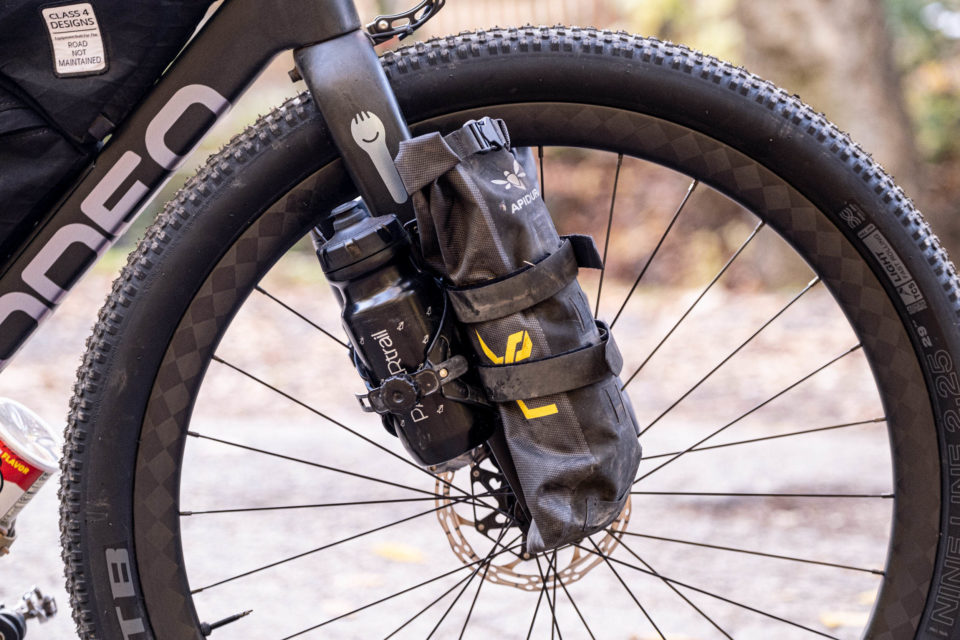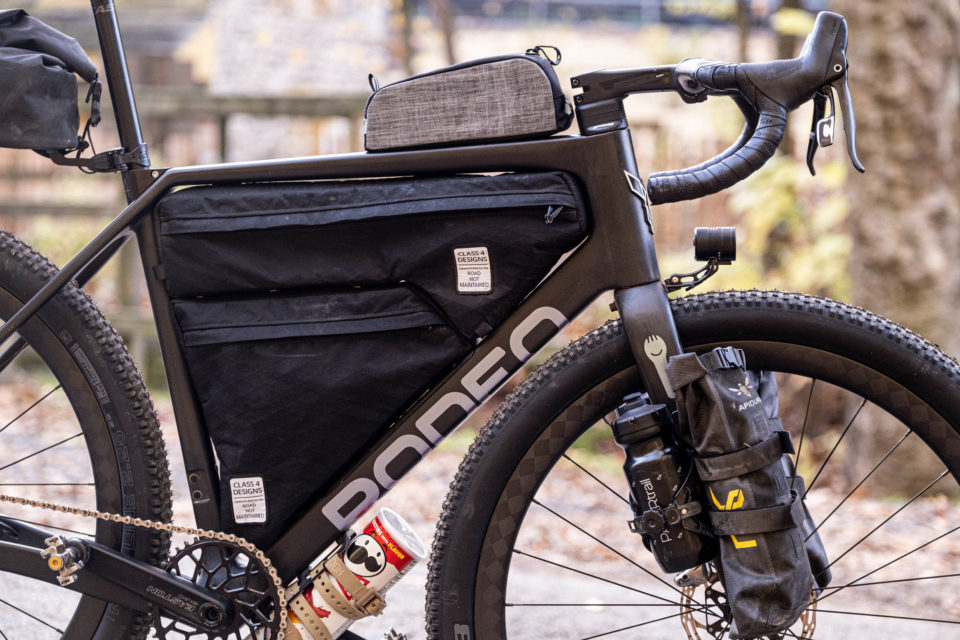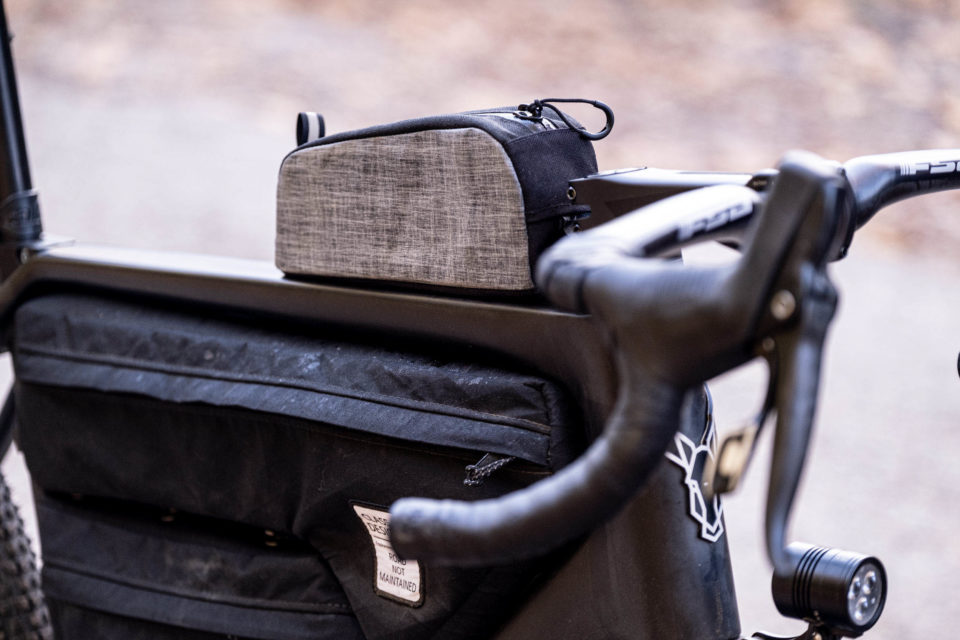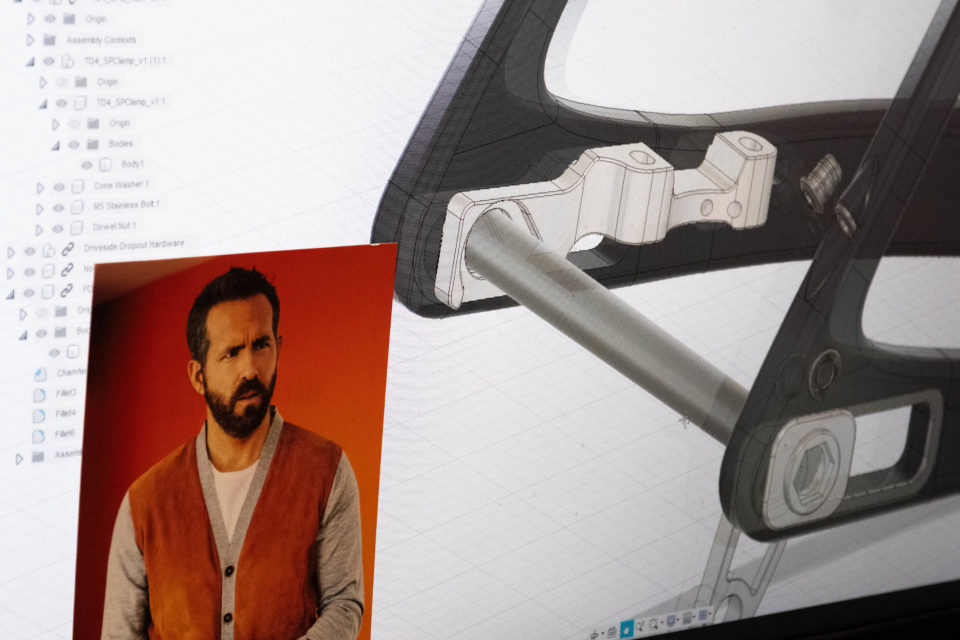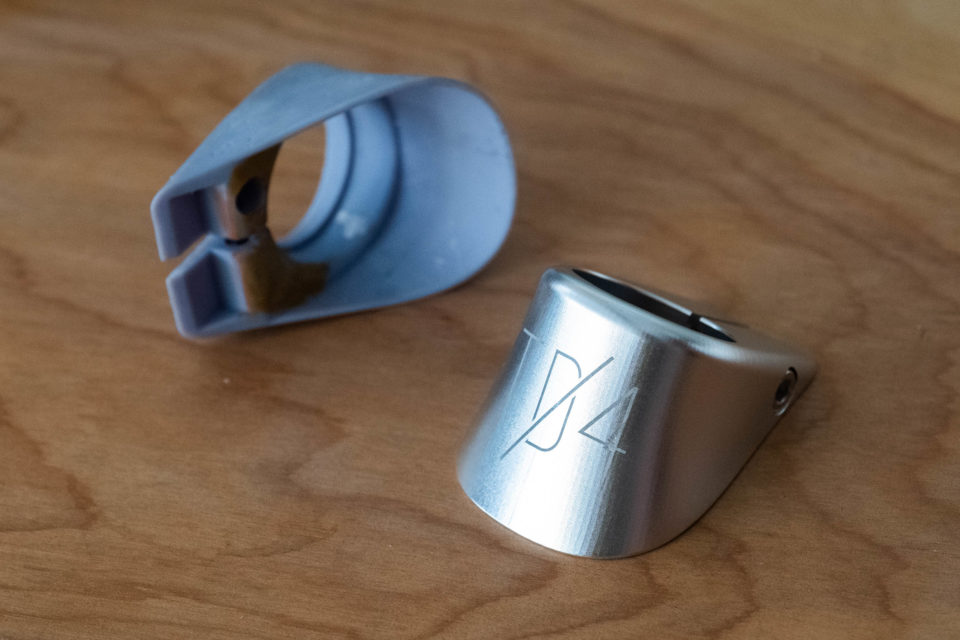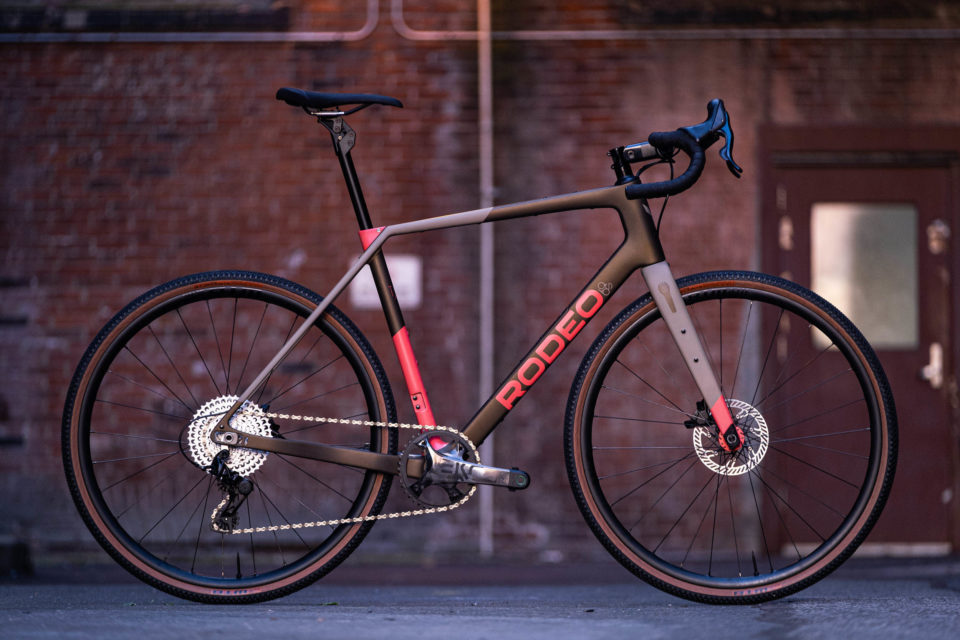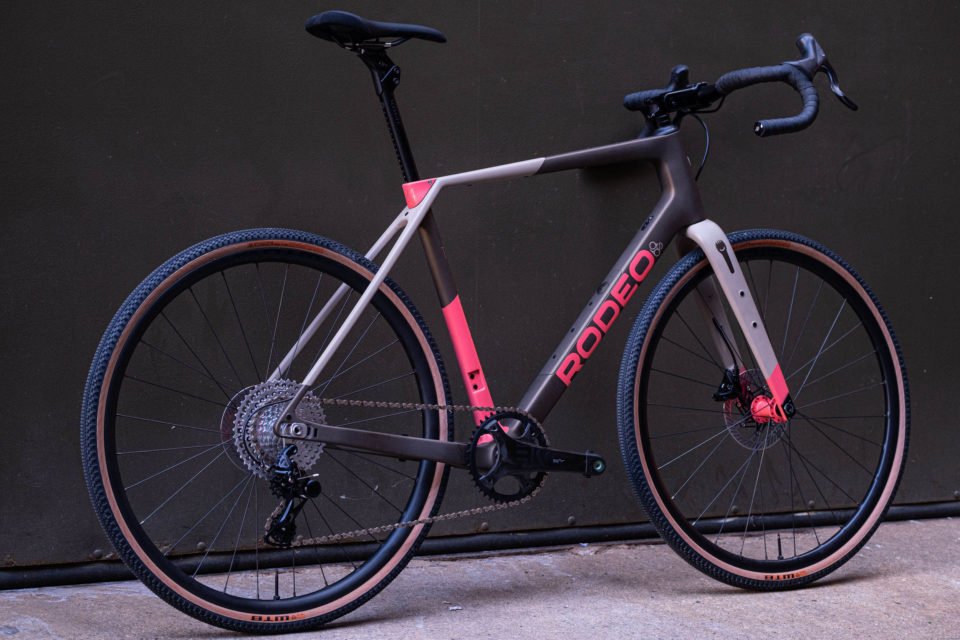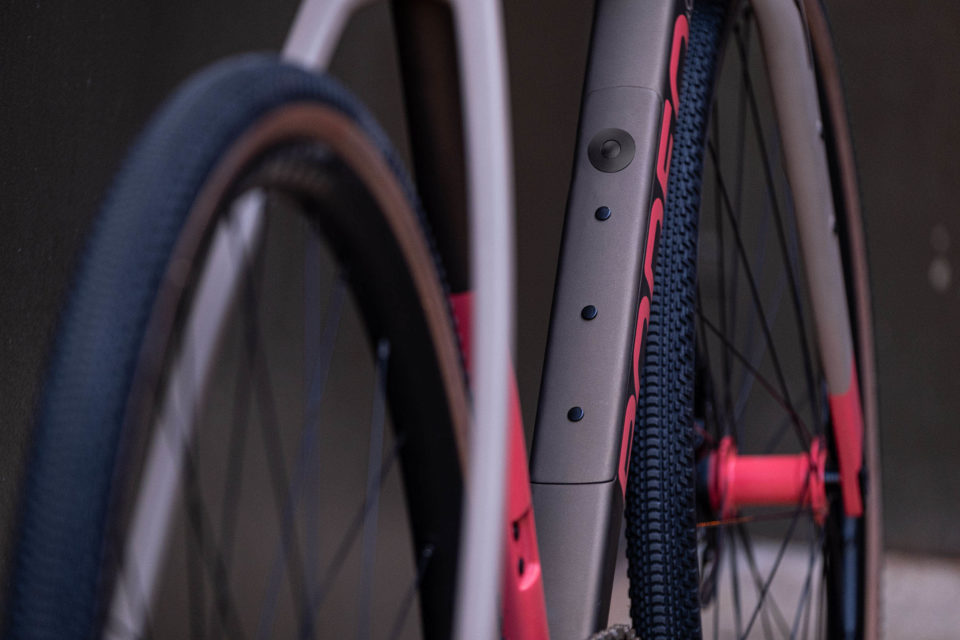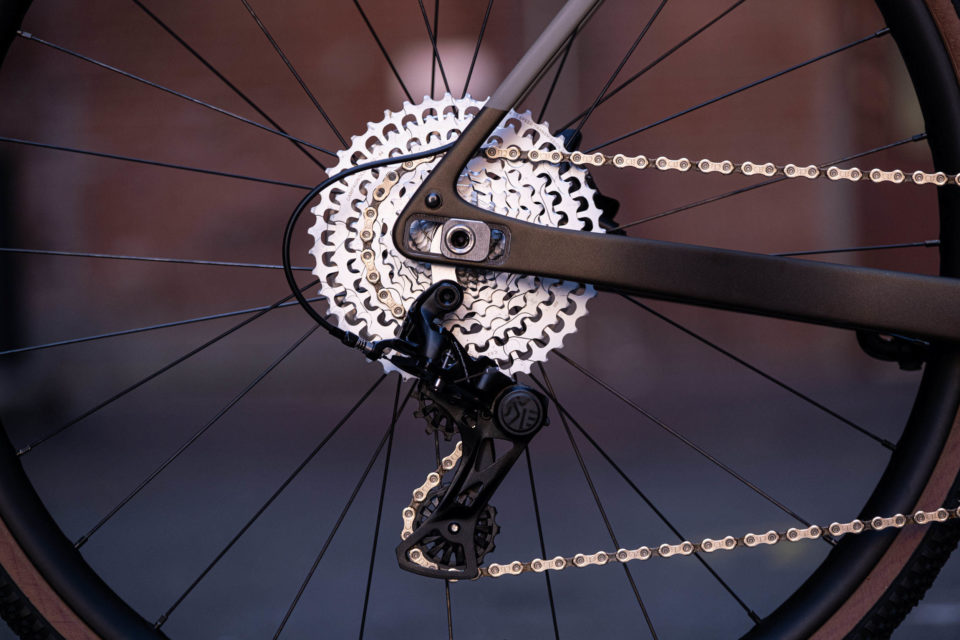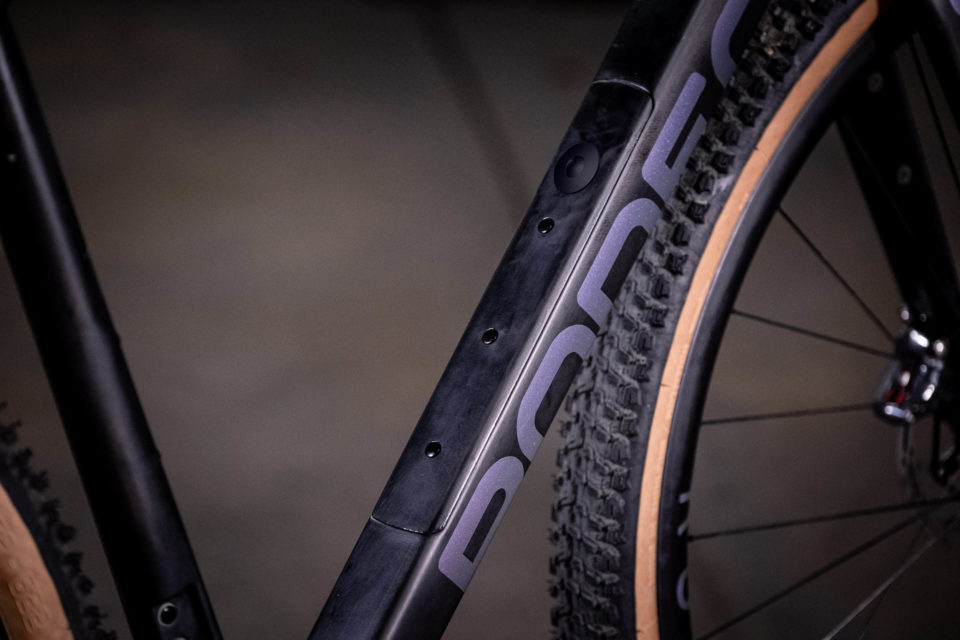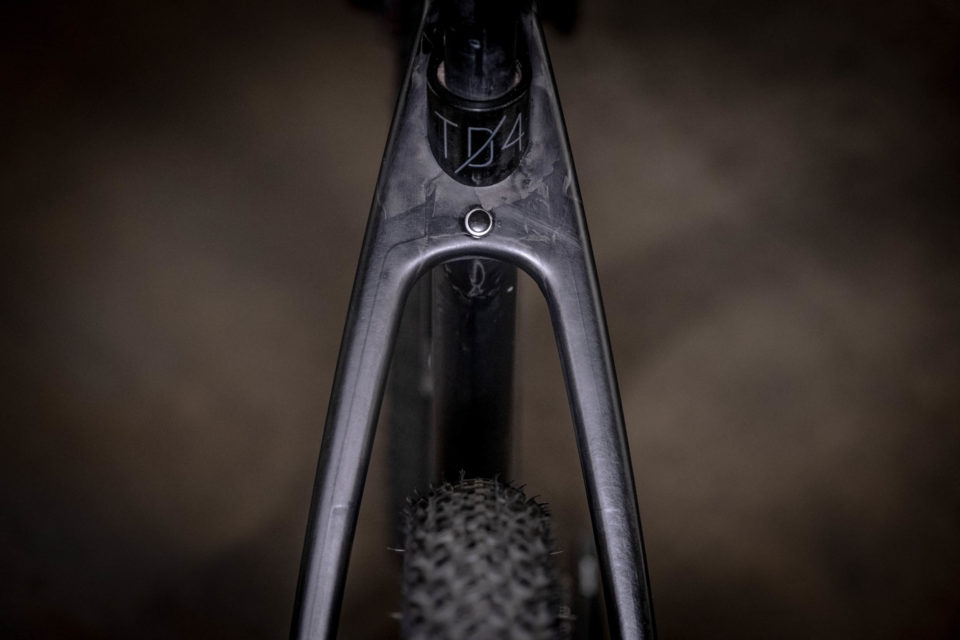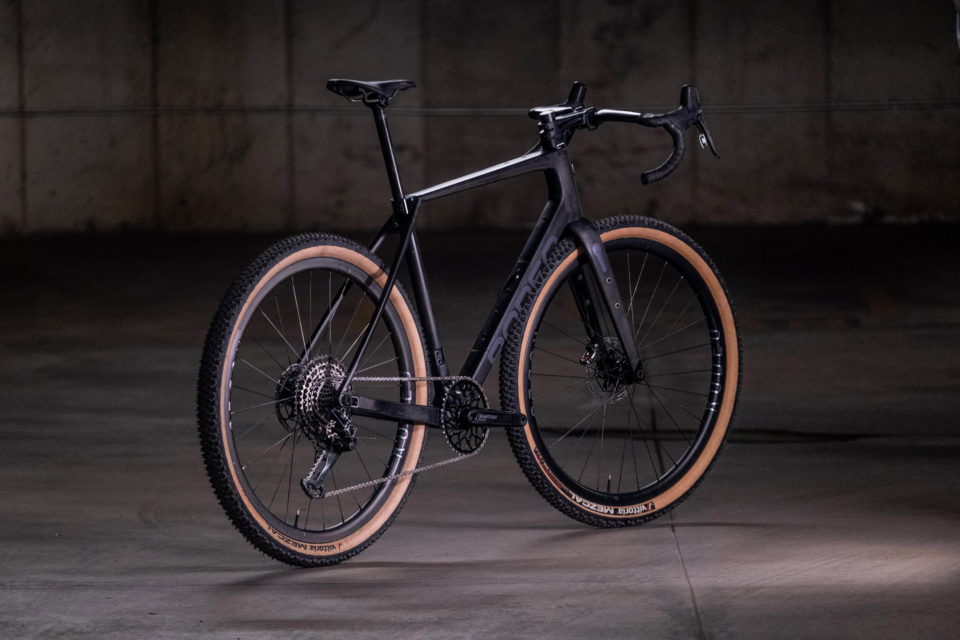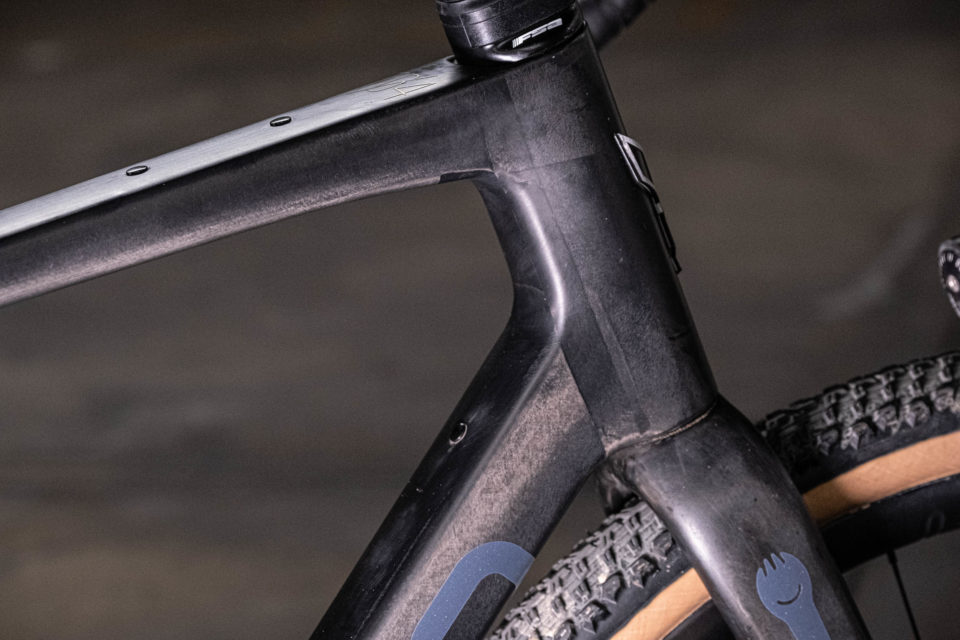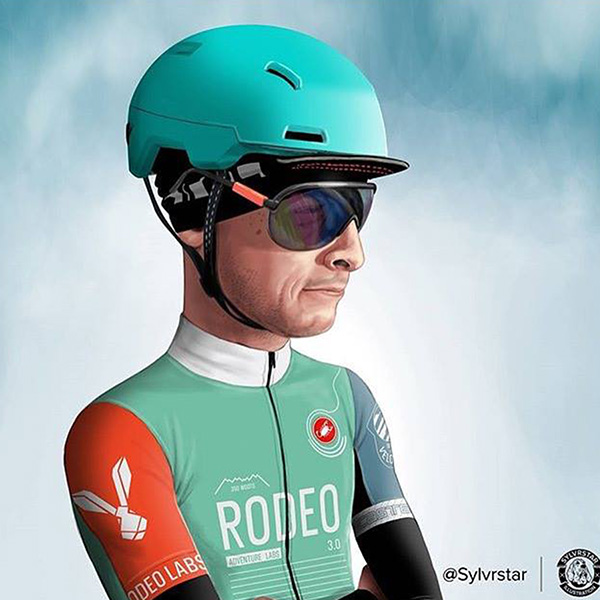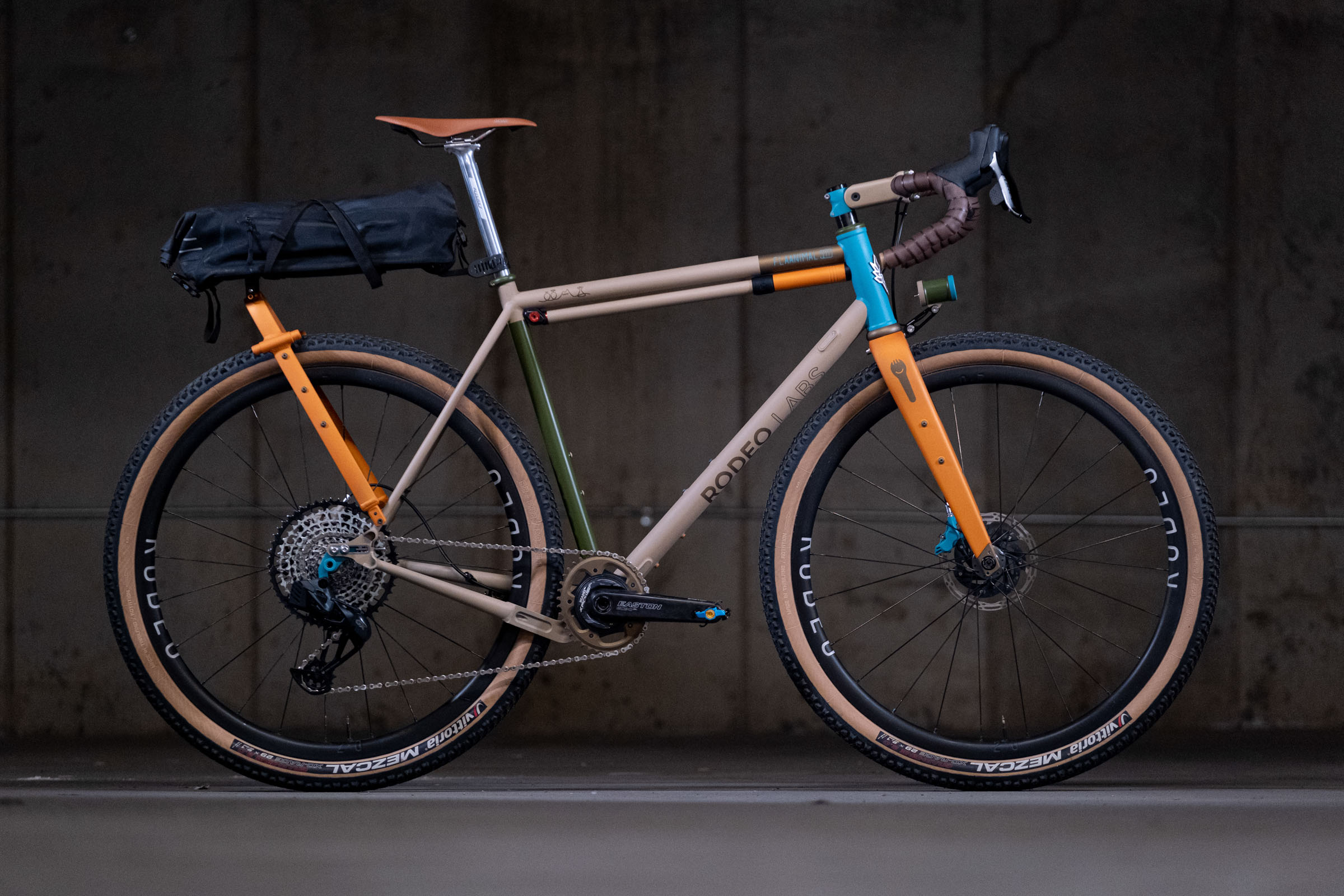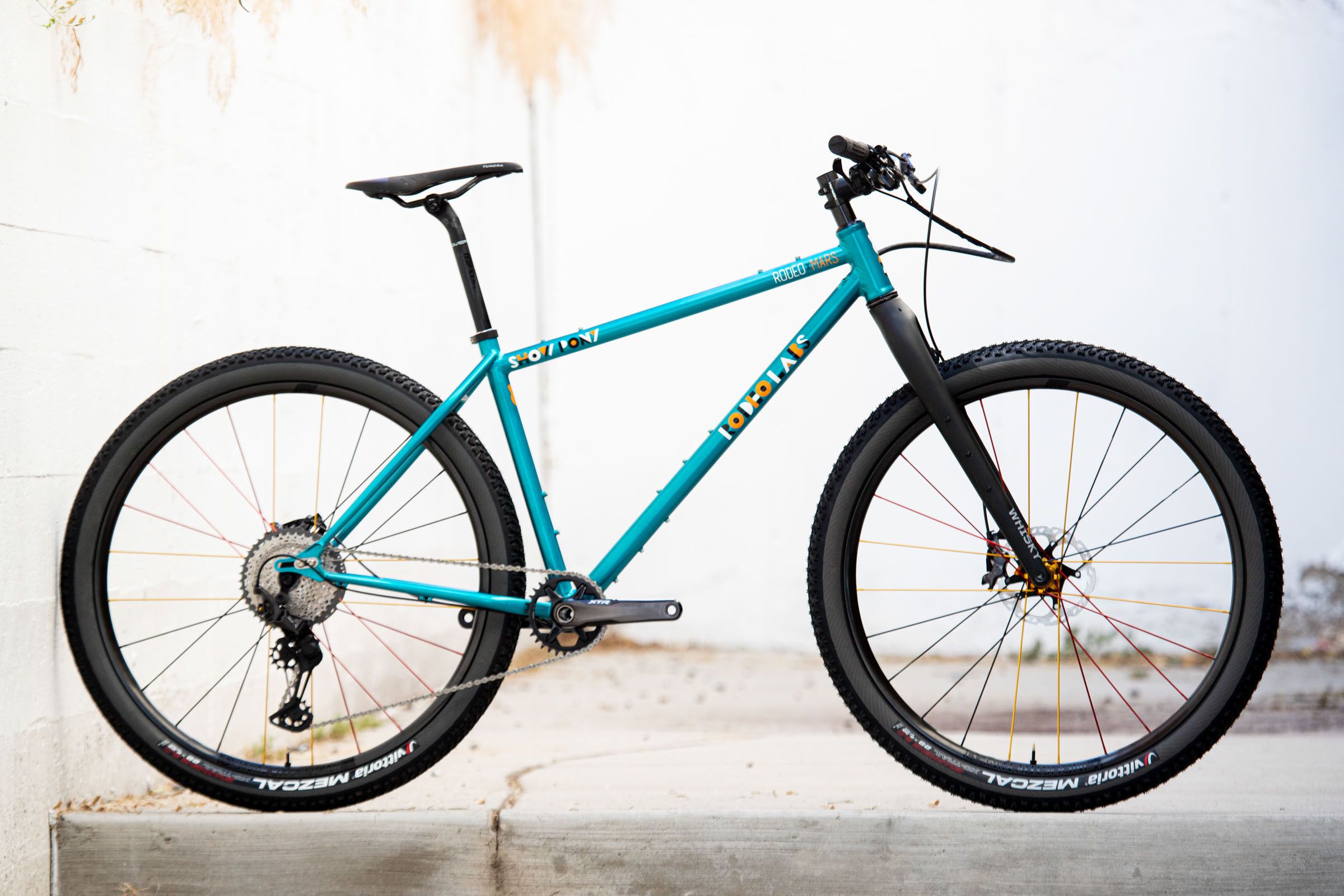Rodeo Labs Trail Donkey 4.0 and the Grand Industry Conspiracy
Share This
Following the release of the Rodeo Labs Trail Donkey 4.0, we reached out to the brand’s founder Stephen Fitzgerald to learn more about the evolution of their do-mostly-everything gravel bike. Find that here, alongside an honest and engaging look at the cycling industry from someone who’s unsure if they’re part of it or not…
Words and photos by Stephen Fitzgerald (@stevetheintern)
For the better part of my 30+ life as a cyclist, I had no idea what the design process for a bike was. The bike “industry” was a big velvet curtain that I couldn’t see behind, and I never thought much about it.
About eight years ago, I very awkwardly stumbled my way into the bike industry, and even at that beginning point, I still had no idea how things worked. But, I knew that for the first time ever, I didn’t want to shop for my next bike out of the available offerings; I wanted to go it alone. Part of the reason for this was that what I wanted was a sort of do-it-all bike wasn’t commonly available. Sure, in retrospect, you did see some builders like Salsa, Specialized, and even Van Dessel experimenting with the genre, but the off-road drop-bar craze hadn’t exploded, and if you weren’t paying attention, you could miss the earliest manifestations of what we all now call “gravel bikes.”
Whatever the case, I’m glad I missed what was already happening in the space because the creative endeavor of bringing a bike to life is one of the coolest, most satisfying things I’ve ever been involved in. Whenever I’m reading bike websites and articles about new bikes pop up, I read the review like most people, but I’m always most excited to skip to the bottom and read the comments to see what sort of reception the new bike got.
Most bikes get almost no reception at all because there isn’t anything particularly remarkable about them. A lot of new bikes don’t add much to the conversation or push any given category of bike further along. A lot of bikes are simply “we’ve got one too” type exercises. And honestly, that’s okay. The wheel doesn’t have to be reinvented on the daily.

A lot of bikes, especially ones that deviate from industry norms or tried-and-true conventions are given truly chilly, hostile receptions. This is always fascinating to me. People love to sound off with their opinions, and people love poking holes in new ideas. On a more sinister level, a certain percentage of commenters get straight-up conspiratorial. We’ve all heard or made those allegations of the Big Bike Industry forcing new standards on us. “Disc brakes are just an excuse to sell more bikes, rim brakes are fine!” or “Gravel bikes are just the bike industry desperately trying to make us buy a new bike when our cyclocross bikes are already fine and mountain bikes are obviously better for most things anyway.”
Occasionally, a new bike comes out, and people just love it in the comments. That’s definitely the most rare outcome, but I digress.
That idea that The Bike Industry is out to trick us all into mass consumerism is fascinating to me, partially because it’s true, and also because it is just as often untrue. Is there a bike industry Illuminati that meets in an old stone New England Mansion once every few years to throw kinky parties and decide what all the sucker consumers are going to be fed next? If there is, I haven’t been invited, which is a bummer because that whole idea sounds kind of fun. And if I haven’t been invited, that isn’t a surprise because I still feel like I’m not actually in the bike industry. I still feel like a total outsider, one with a massive case of Impostor Syndrome.
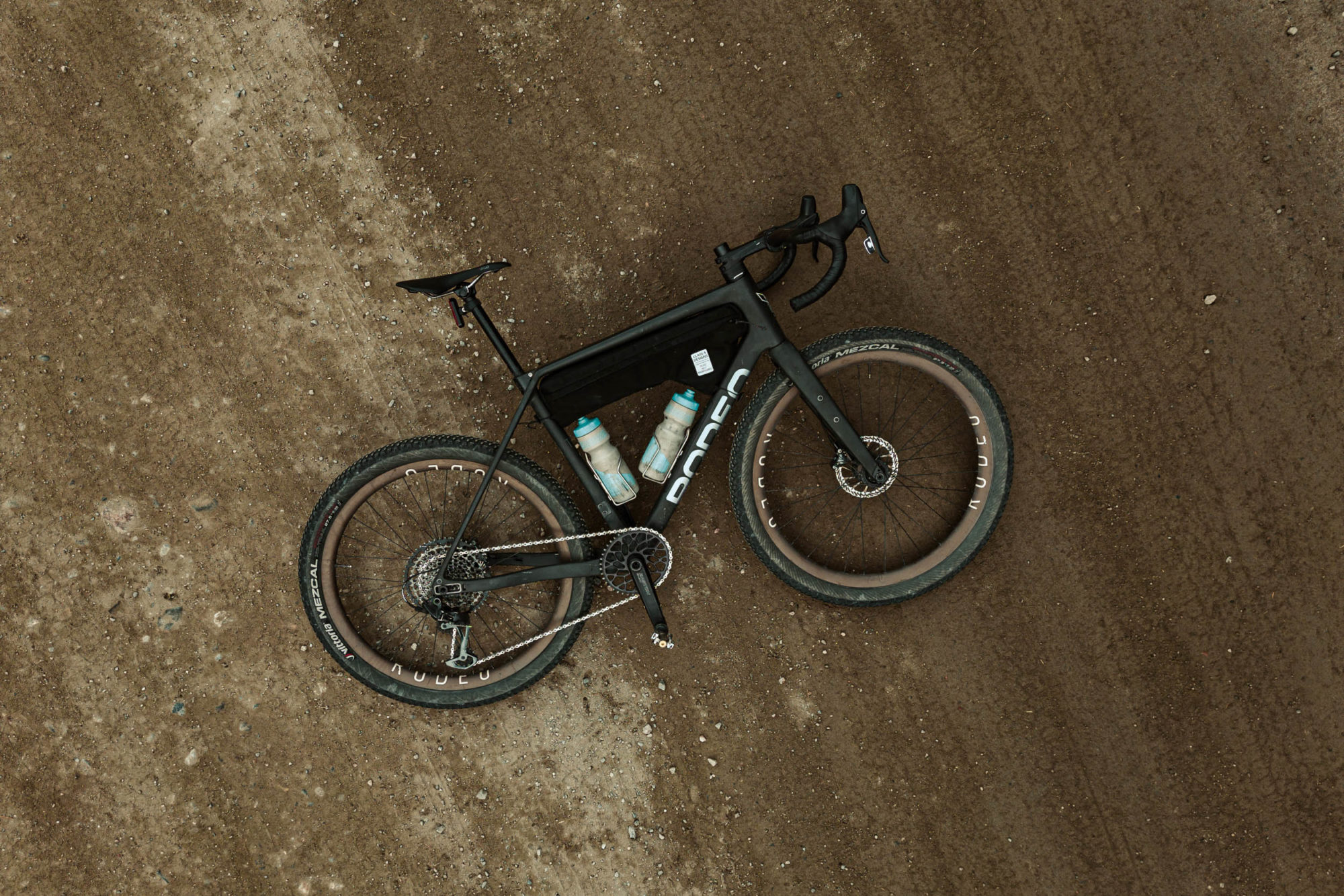
So, where do new bikes come from, and how are new bikes developed? The sad fact is that I’m mostly the wrong person to ask, unless you are exactly asking how we at Rodeo have gone about developing the bikes that Rodeo offers.
I remember taking my old Bianchi cyclocross bike off the road and onto the singletrack trails around Denver in 2012 and 2013. That guilty pleasure of bending genres and creating interesting new routes was too much to resist. That pleasure was also a source of nearly bottomless inspiration. If a cyclocross bike could be this much fun, could the platform be pushed just a bit further to be a bit (sic) funner?
That question is where Traildonkey 1.0 came from in 2014. Such was my naivete about the nascent gravel genre that I wasn’t even clever enough to to call it the Gravel Donkey. But in the quest for more funning, I got a few things right: I wanted 40mm tires, I wanted MTB gear ratios, I wanted disc brakes, and I wanted to run a dropper post. None of these ideas came in official memos from the Bike Illuminati. They just came from roads and trails around Denver. My legs hurt when riding CX gears up Mt. Falcon, and my hands hurt even more when squeezing canti brakes on the way back down. The tall seat position that I wanted riding to the trails really got in the way during technical riding, so perhaps a dropper post could solve that? There was only one way to find out! I found an open mold Chinese frame in some bike geek forums, painted it Rodeo team colors, had it modded for a dropper post, and built it with 40mm tires, disc brakes, and MTB gearing. TD 1.0 was born, and damn was it fun.
I rode my 1.0 Donkey for the better part of a year, and showed it to anyone willing to listen. I took a lot of pictures and wrote a lot of stories. Insta-Meta-Facepage took notice. The having of the fun that I was doing looked relatable, and soon other people wanted one of these Donkey bikes. People started to ask how they could buy one. I didn’t want to sell an open mold bike as my own, so after nearly a year of people asking, I worked with engineers and a factory to translate and improve my 1.0 ideas with the 2.0 version of the bike. Once completed, that bike was the start of Rodeo Labs the bike company, and I guess that’s when I sorta-kinda became a member of the Bike Industry.
I still remember that day clearly. I was at my office in my backyard when the mail carrier delivered a certified envelope with a spoked wheel design red wax seal: “Urgent invitation, discretion requested” was the title. When I opened it, a heavyweight parchment paper slid out. On it, printed in ornate calligraphy, were listed only an address and a time. “Speak to no one about this,” it warned.

Intrigued, I found myself driving to that address a week later. It turned out to be the address of one of Denver’s oldest law firms. The building was lined in polished marble and richly stained oak paneling. I was led by the stern receptionist to an empty conference room with a long table and a stack of paper at one end. “All that is required is your signature, simply prick your finger and dab it with the quill pen and then sign. After you do you, your mentor will advise you on what it means to be a member of the Bike Industry, suffice to say that your voice will be one of many that shapes the future products and desires of the sport.”
That story sounds cool-ish. But of course, it also isn’t real. Nobody welcomes you into the bike industry. You don’t get an invitation. Nothing is signed in blood. But in some ways, in the eyes of many, you do instantly become a part of The Problem. You are now part of that cadre of scheming companies out there trying to trick consumers into adopting new fads and needless expensive tech in a quest for the mighty dollar and in service to malevolent capitalism.

Not being aware of any of this, I just kept riding my bike and answering emails from people who wanted one. I remember when TD 2.0 hit a few media websites, the comments were exactly as mean as they should be: “Disc brakes are dumb, droppers are for idiots, it must be a generic Chinese frame, the bottom bracket was too high,” and most importantly, “Just get a mountain bike.”
My favorite conspiracy levied at me was that Rodeo was a guerilla marketing effort by a major clothing manufacturer in a bid to sell more lycra. Someone really thought that. Once, on Reddit someone, said that Rodeo was buying Specialized AWOL frames, cutting off the rear triangles, welding on new ones, repainting, them, and selling them for a profit. Richard Sachs weighed in on us over on Velo Salon, and on Bike Forums we were skewered as hipsters with a WordPress template. That last allegation was half true, and still is, by the way. Our website has always used WordPress and has never been very good.
As for me, I was struggling financially, which is of course a requisite of being in the bike industry, but I was having the time of my life building bikes and I was loving doing all the things on TD 2.0.
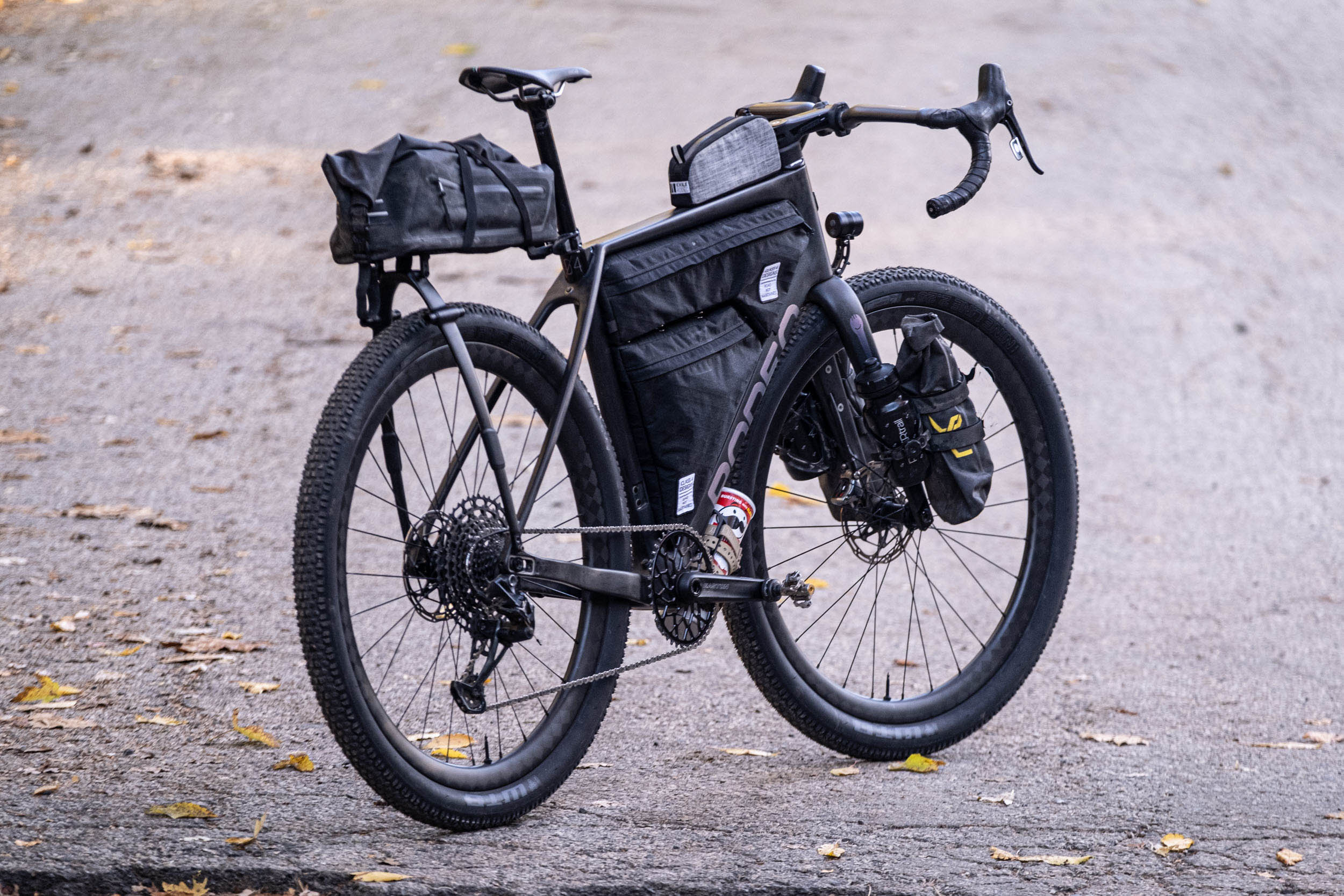
Unaware of my responsibility to stoke the fires of consumerism, I had no intentions of making a future version of the Donkey with which to obsolete the current version. TD2.0 did it all for me, and people wanted them, so things were going just fine. That held true for a couple of years until a good friend invited me to take a gaggle of our bikes to the San Juan Mountains in Southwest Colorado. On that trip, my mind was blown wide open, and the canvas on which to paint with a bicycle got infinitely larger for me. The San Juan riding consists mostly of extremely steep, extremely rugged, and extremely hostile old mining roads that climb up and over 13,000-foot passes. The “roads” climb and descend some of the most beautiful terrain that I’ve ever seen, but the roads aren’t interesting enough that many would necessarily want to go mountain biking there. The San Juans don’t have much singletrack (Colorado Trail aside), The routes aren’t flow trail, etc., etc.
We took the Donkeys on those roads and got absolutely brutalized by them, but I had never been so inspired by a place in my life. While riding, I instantly started thinking about how to adapt our bike to those conditions because that was now the kind of riding I wanted to do more of. I started dreaming about Donkey 3.0 on that trip, and a week later I was in discussions with engineers and designers about how to create more tire clearance on our bikes to make them more capable in the San Juans. A new fork resulted, a new rear triangle resulted, and along the way, the press fit bottom bracket had also been upgraded to T47 threaded. The seatpost diameter was reduced from 31.6 (MTB spec) to 27.2 (road spec) to allow for more flex. It all felt very Darwinian to me.
I remember while discussing wanting much more tire clearance with an engineer, he offered some sage industry veteran feedback: “Tires this big on a drop bar bike are stupid, none of the other brands are doing that.” Comments like this were probably the closest brushes I’ve had with the supposed Bike Illuminati, that guiding force of peer pressure and industry trends that exerts itself on nearly everyone in the industry. But I ignored that comment and responded, “If I wanted to do what everyone else was doing, I wouldn’t have gone through the trauma of starting my own bike company.” I wanted to do what I wanted to do, and I wanted to ride my bike wherever I wanted to ride it. If you’ve ridden in the San Juans, you see the logic of stupidly large tires. If you’ve only ridden in Kansas, or normal gravel roads, then those same tires have no context, and are surely the industry selling you something that you don’t need.
For years, TD3 was the perfect bike for me, and plenty of customers adopted and loved theirs along the way. People would often inquire, “When is the next one coming out?” and I would respond, “I have no idea, we don’t have any ideas for what is next, and the bike is what we want just how it is.” This doesn’t jive with the industry drum beat of product refreshes every year or two, and for sure we were eclipsed by newer and more exciting bikes along the way. Gravel had exploded by 2018 and 2019, and everyone was getting into the game, even stodgy road and triathlon companies who couldn’t resist the obvious profits hanging low on the sagging branches of the gravel tree. The gravel gold rush was on, and indeed even we were swept along by it. Our bike that said “Trail” in its name turned out to be just fine at racing dirt roads in the Midwest, and I’m super grateful that so many people caught the trend and joined the ride.
Being happy with what you have doesn’t jive with major tenants of Western culture, but Rodeo was happy with the state of TD3 for many years, and customers were similarly happy with it. We sold every frameset we made, and there was still demand on the other end of that. Interestingly, our similar-but-steel Flaanimal frame had cleverly leapfrogged the Donkey platform along the way with even bigger tire clearances and sliding dropouts, the latter being a request from customers, and the former being a result of the latter.
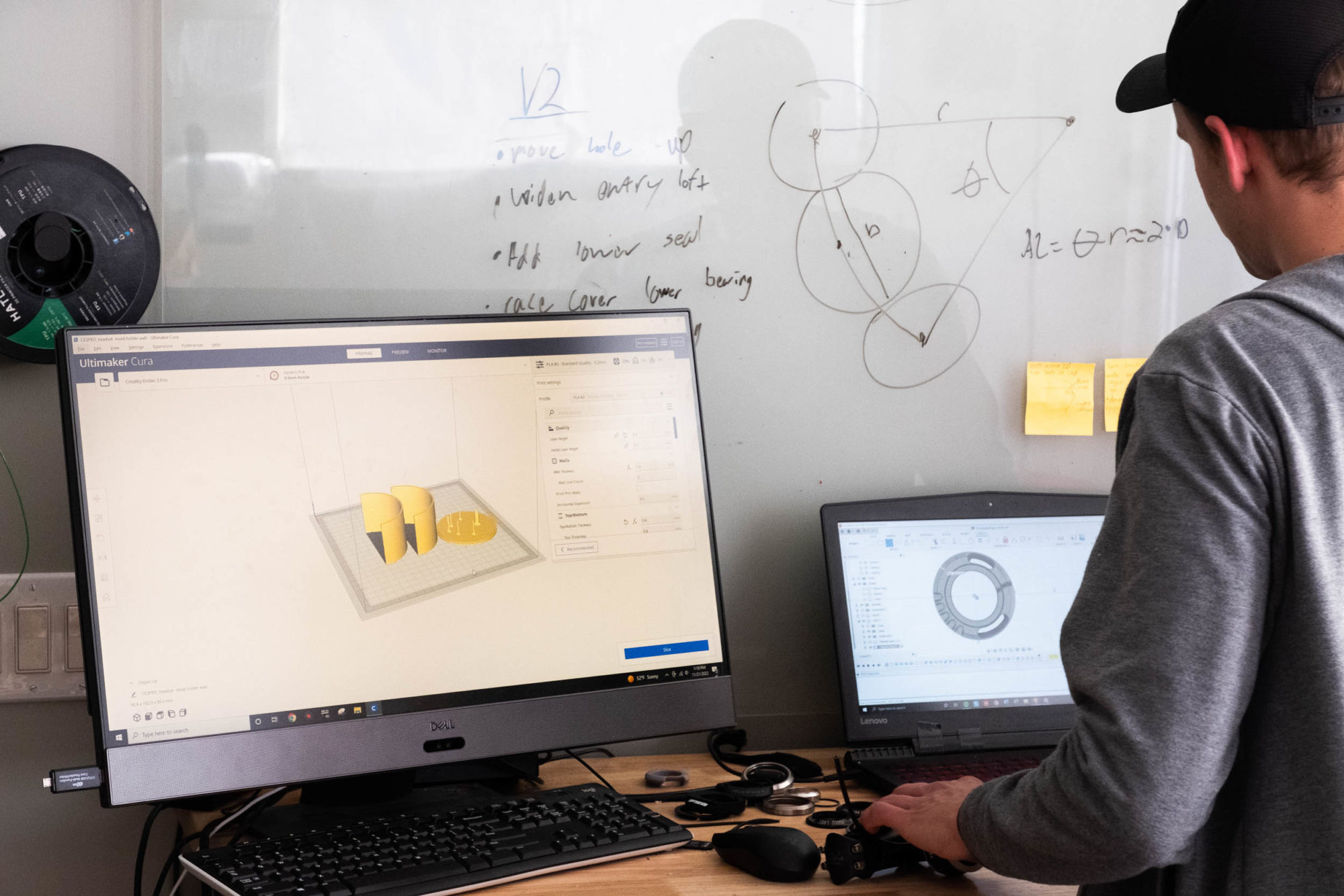
Eventually, the Donkey settled into the rhythm of being the bike that you might be more inclined to race, and the Flaanimal took a supporting role as the bike you were more likely to ride even more ruggedly or out on bikepacking trips. The two complemented each other, and once again we had not even the twinkle in our eyes to evolve either platform. Had we created perfect bikes? Of course not, such a thing does not exist. But we had created capable bikes that had found their audience and that was good enough for us. Things were good at Rodeo.
And then Covid hit.
Covid was one of the most spectacularly good things to ever happen to the bike industry if you see things through the lens of economics and growth. I heard numbers of 30-100% year-over-year growth from brands over that three-year period. Nobody was prepared for that growth, and as anyone looking for a derailleur in the last three years knows, the supply chain collapsed. The bike industry broke under the strain of pretty much the whole world waking up and realizing one of the only things they were allowed to do outside was go running or ride a bike.
Covid was an amazing time to be selling bikes, you could sell every bike you could get your hands on, but for me and for Rodeo, I think history will show that Covid was just a mega nightmare. Our brand wasn’t prepared to scale quickly, and we couldn’t handle the strain caused by all of the demand and broken supply chains. One casualty of the era was that our relationship with our manufacturing partner became very strained, and they pretty much fired us as a client in 2021. The whole fiasco almost killed Rodeo, but it also had a major silver lining: It forced us to start from scratch on the Donkey platform as we transitioned production to a new manufacturing partner. Inspiration can come from many sources. Possibly the best inspiration for designing a bike is the singular act of riding a bike, but falling somewhere lower on the list of great inspiration, an existential crisis can cause you to ask, “What is it that we are going to do next in order to survive?”
This crisis in 2021 is when our newest bike, Donkey 4.0, was born. It wasn’t born out of industry trends, it wasn’t born out of a singular moment of inspiration on a ride, and it wasn’t born in a Bike Illuminati conference room. TD4 was born out of an emergency that forced us to get out our pencils, a blank sheet of paper, and ask ourselves if we could re make the bike out of the ashes of Covid and 2021.
I’ve now written more than 3,450 words and I haven’t said a thing about the feature set of TD4, why we think it’s good, and why I’m proud of what we’ve created. And after a bit of thinking, I’m not going to go into any of those specifics here beyond some photos and captions embedded in this piece. This isn’t a press release about a new bike; it’s a story.
If you’re curious about this platform, I’m pretty sure some stats will be listed by the site editor below, and you may agree or disagree with the functional decisions and design choices we’ve made on this bike. Here are some philosophical bullet points about TD4 that I would instead chose to highlight:
—TD4 isn’t the best bike.
—TD4 isn’t a perfect bike.
—TD4 isn’t right for everyone.
—TD4 is at its heart about functional spectrum and user configurability.
—TD4 would be much cooler and would have a lower footprint if we made it in Denver instead of Asia, and we are actively working on being able to do that someday. But in the meantime, we focused on quality of construction and durability.
—TD4 is neither aero nor not aero, and we have no data to back that statement up.
—TD4 is probably more bike than many people need. Most people who buy it because of its features won’t use most of its features… but if they grow in ambition the bike can grow with them.
—TD4 is a jack of all trades and not really a master of any.
—TD4 is aware of industry trends, but it’s far more about building the bike that I and others at Rodeo want to ride.
—TD4 is the first bike that we’ve designed nearly entirely in-house, which is a major milestone for us. We still engage outside experts on key details, but we drew these shapes, we designed our hardware, we agonized over each detail, and we had a lot of great arguments along the way.

Final point: We don’t think you should get rid of your current bike and buy a TD4. We know that many people will like this bike, and many people will buy gravel/ATB/bikepacking bikes in the coming years. Bikes have gotten so good in the last five years that almost anything out there being ridden is already a great bike. If you, God forbid, destroy your current bike, or it gets stolen, or it just can’t keep up with your style as your style evolves, then we would be plenty happy if you like what you see here and consider it worth adopting.
To all of you conspiracy theorists and counter culture thinkers in the bike community, we salute your skepticism and resistance to the latest and “greatest.” Keep being skeptical, keep riding what you have, keep finding inspiration and truth out on your rides, and keep flipping the bird to the Bike Illuminati, which I may or may not be a member of.
Rodeo Labs Trail Donkey 4.0 Specs
- Frame Material: Toray T8000
- Country of Manufacture: China
- 650b Tire Clearance: Max width: 2.4″, Min. recommended width: 48mm
- 700c Tire Clearance: Max width: 56mm / 2.2″, Min. recommended width: 28mm
- Frame Weight: 58cm 1190g raw. Other sizes approx. 50-100g lighter per size
- Fork: Rodeo Spork 3.0, Full carbon adventure fork
- Fork Weight: Average 495g
- Cable Routing: Mechanical shifting, Di2 shifting, AXS shifting. Accommodates full integrated internal routing through cockpit, semi-internal through headset upper, and traditional downtube entry cable routing with convertible frame caps
- Dynamo Routing: Front and dynamo routing compatible. USB stem cap, dynamo hub compatible
- Brake Standard: Flat Mount, 160mm rear & 140 / 160 front. Max 160mm rotor
- Bottom Bracket: T47 threaded, 85.5mm width
- Seatpost: 31.6mm, 30.9mm, or 27.2mm. 27.2 shim supplied with each frame
- Dropper Post: Full internal routing down downtube and up seat tube
- Thru-Axles: 12 x 142mm rear, 12 x 100mm front—convertible to 15 x 100mm
- Headset: 52mm integrated frame cups, IS 52-40 upper, IS52-40 lower
- Drivetrain Compatibility: 1x or 2x drivetrain configurations, as well as native singlespeed. 2x standard, compact, and micro compact compatible. Max 1x chainring 44t
- Front Derailleur: Braze-on, removable
- Rear Derailleur Hanger: Aluminum, replaceable – hanger design unique to TD4 slider system. Singlespeed hanger delete kit available separately. Not compatible with SRAM universal hangar design. 8mm to 12mm hanger tool supplied with frame.
- Fender Mounts: Frame and fork. Max 65mm outer fender width at 700c. M5 bolts
- Bottle Mounts: two three point bottle mounts on inside main triangle one on outside lower down tube. 1 on upper top tube (bento box mount). 2 on fork legs. M5 bolts
- Rack Mounts: Frame and fork. Tailfin standard eyelet mount compatible. Tailfin quick axle mount compatible. Optional offset eyelet kit available for fork for low rider rack compatibility. M5 bolts
- Bag Mounts: Strapless M5 bolt mounts inside front triangle for half or full direct mount frame bags. Also compatible with traditional strap mount frame bags. (Use frame protector with strap mount bags)
- Fork Mounts: 2 mid leg eyelets per fork blade (eyelets thread through both fork leg walls for double eyelet strength). 2 eyelets on each blade near axle. Optional offset eyelet kit for pannier style racks. M5 x 10mm bolts. supplied for water bottles and similar loads. For heavier loads use M5 x 20mm bolts (not supplied)
- Fork Cargo Capacity: 27.6 lb / 12.5 kg total cargo weight, evenly distributed
- Frameset Rider Weight Limit: 250 lb / 113 kg
- Adjustable Chainstay Length: 425mm – 458mm
You can reserve your very own Trail Donkey 4.0 frameset for $2,975 USD over at Rodeo-Labs.com. They come in five sizes, complete builds add at least $3,000 to the frameset price, and custom builds are available upon request. Rodeo Labs also offers a full custom paint program and your choice of decal colors.
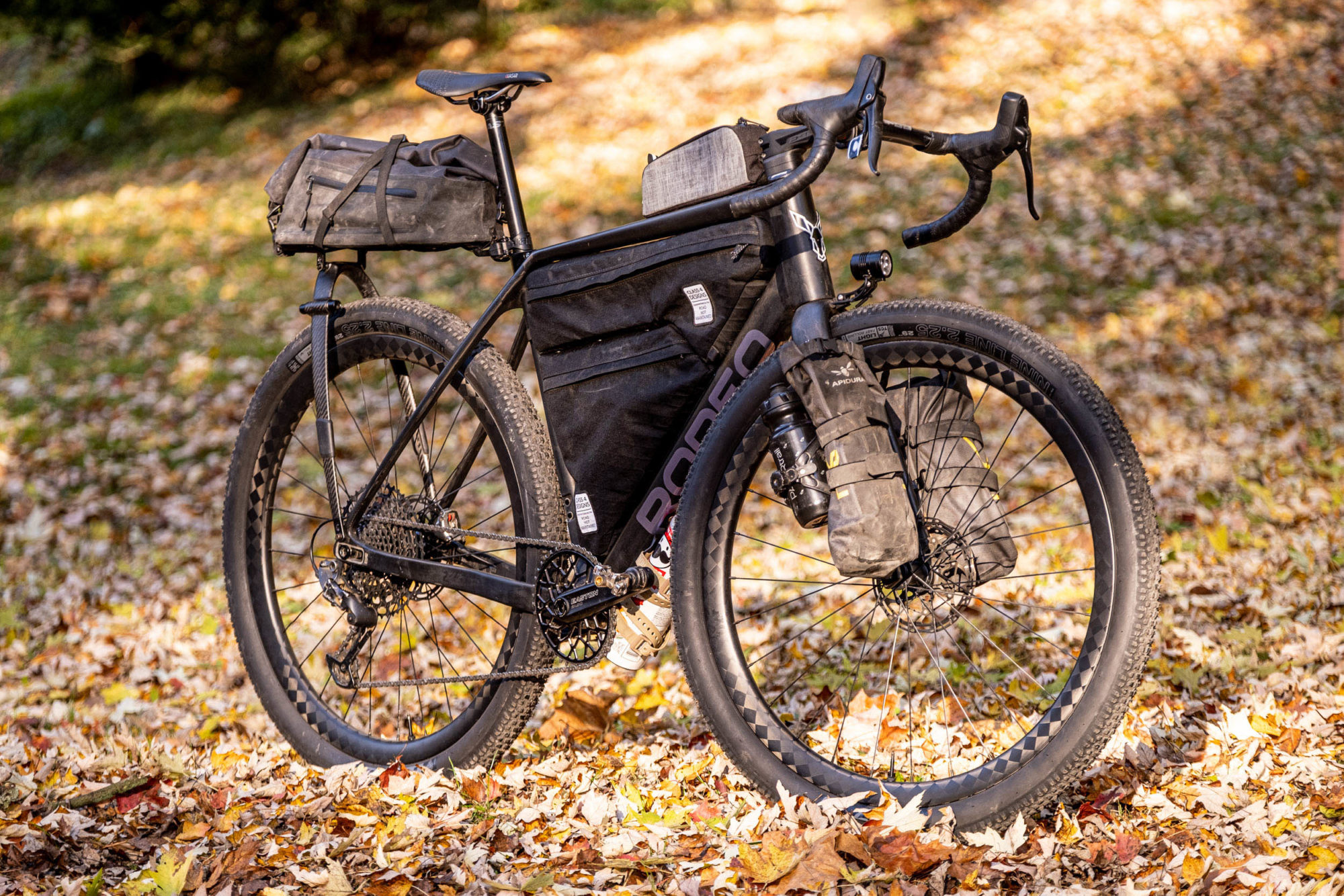
Related Content
Make sure to dig into these related articles for more info...
Please keep the conversation civil, constructive, and inclusive, or your comment will be removed.






